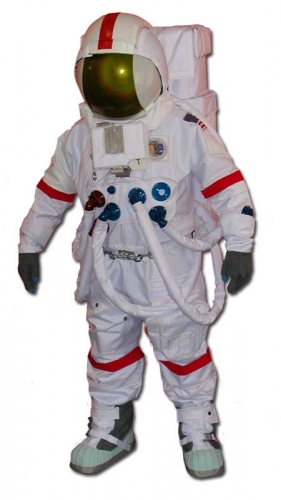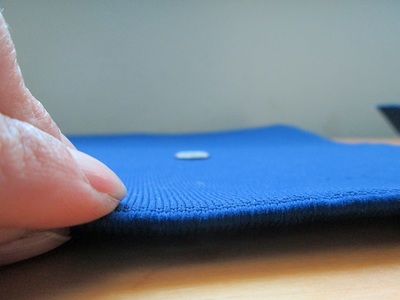Now You Know Knitted Space Suits: Protective Wear for Future
Sunday, 3 February 2019
Edit
Knitted Space Suits: Protective Wear for Future
Space suits
A space suit is a garment worn to keep a human alive in the harsh environment of outer space, vacuum and temperature extremes. Space suits are often worn inside spacecraft as a safety precaution in case of loss of cabin pressure, and are necessary for extravehicular activity (EVA), work done outside spacecraft. Space suits have been worn for such work in Earth orbit, on the surface of the Moon. Normally it is used as a protective wear.
 |
| Figure-1: space suit |
Fly higher and higher, the air becomes thinner, so they need air to breathe and to support their bodies. The earliest suits were made of rubber and cloth and were stiff, bulky and hard to move around in. In the 1950s and 1960s, Russia and America got into a race to be the first into space. Although the earliest astronauts stayed inside their spacecraft, scientists knew they needed protection, and so started work on better space suits for these missions.
The first NASA spacesuits were silver in color, because scientists thought this would reflect the burning hot sun rays. They had hoses on them that were attached to machines that kept them supplied with air and cooling water. The picture on the left shows the first seven NASA astronauts, selected from the best Air force test pilots, to fly on the Mercury space missions that put the first Americans into space.
Why they are necessary?
A space suit must perform several functions to allow its occupant to work safely and comfortably, inside or outside a spacecraft. It must provide:
- A stable internal pressure
- Mobility
- Temperature regulation
- A communication system
- Means of collecting and containing solid and liquid bodily waste
- Shielding against ultraviolet radiation
- Limited shielding against particle radiation
- Means to maneuver, dock, release, and/or tether onto a spacecraft
- Protection against small micrometeoroids
The first knitted space suit was designed by the collaboration of NASA, Nike, and USAID & US department of state. It was designed in 2010 and launched in 2013 especially for the exploration of mars.
Technology used in knitted space suits
Flat knitting was used for producing samples of spacer fabric by using different yarn for different purposes like Kevlar, silicon, carbon, spectra etc. 5+ layers are used for making this suit.
Related:
 |
| Figure-2: spacer fabric sample |
One of several concepts in Fabdesigns, Inc. submission to LAUNCH 2013 plans to address Space Adaptation Sickness (SAS) and muscle loss. It utilizes electro stimulation, with current applied, and sensors receiving data much like the function of knitted brace supports and some high tech wet suits currently on the market. This compressive garment combats lack of gravity by: increasing circulation and venous blood flow, delays exhaustion and muscle soreness, optimizes endurance, helps the body remove lactic acid faster, improves strength and power, and encourages positive posture like an orthopedic training garment.
Future scope
On Earth radiation is a danger faced by the military, health care workers, and the first-responder in many different scenarios. Like it or not, this world is becoming more challenging with pollution, disasters like the Fukushima Daiichi Plant, and horribly creative terrorist situations that none of us want to imagine, but are none the less real. Our anatomically correct applications addressing protection as well as comfort, will reach the people who need it much faster as extreme career wear, in military, medical, energy, transportation, safety, protection and first responders.
Sumber http://textilelearner.blogspot.com



